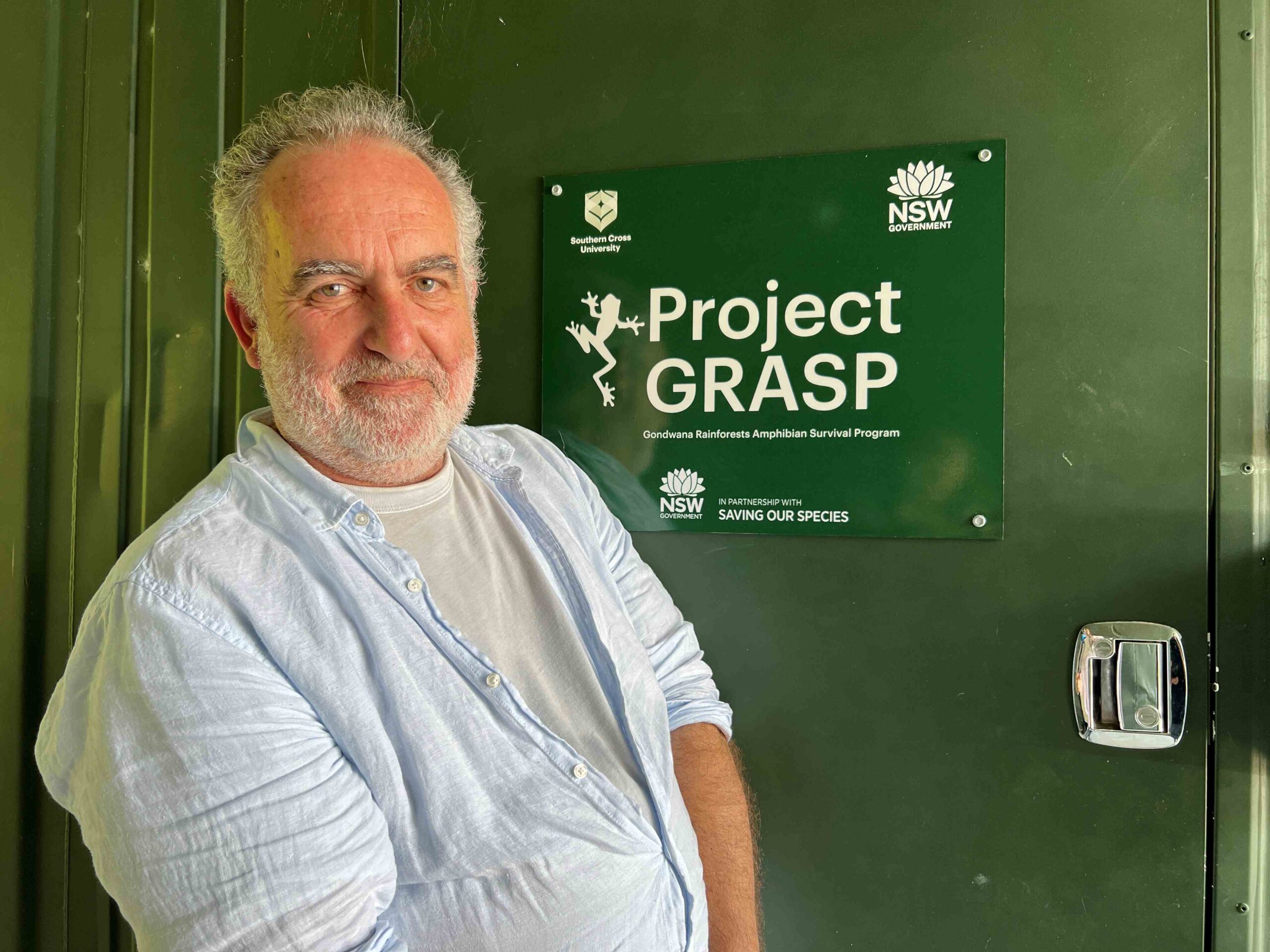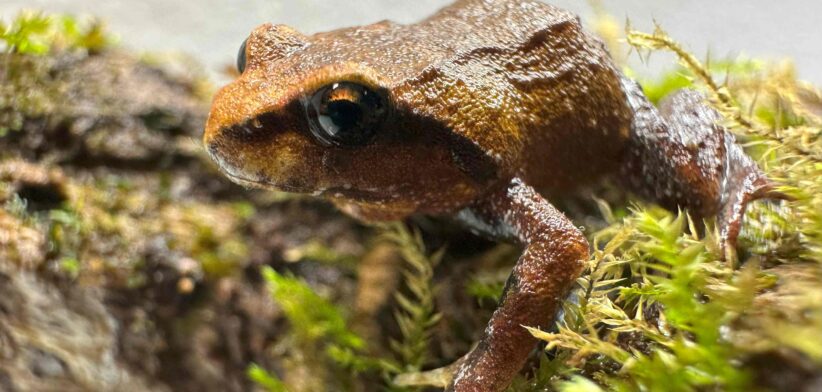Southern Cross University researchers are working to save an endangered species of frog by breeding it and reintroducing it to its natural habitat.
The Mountain frog Philoria kundagungan faces extinction from climate change and introduced species, particularly pigs.
Mountain frogs are an ancient lineage of amphibians that live within very small patches of mountain top rainforests.
Some of these frogs are restricted to cool temperate rainforests of northern NSW and south-east Queensland, which are part of the Gondwana World Heritage area.
The Southern Cross research has been boosted with a $500,000 Australian Government grant that will support the program to reintroduce the rare Gondwanan rainforest frog back into its natural habitat.
Federal Environment Minister Tanya Plibersek said the funding was “about supporting the dedicated scientists, conservationists, and passionate local community groups right across Australia who are working hard to save our precious native plants and animals.”
Research lead Associate Professor David Newell said the funds would play an important role in supporting the ongoing efforts to save the frog from extinction.
“Because these frogs cannot move far from their headwater stream breeding sites, they are now effectively stranded on islands in the sky,” Dr Newell said.
“Despite their habitats being well-protected within World Heritage listed National Parks, the frogs are increasingly threatened through climate change and pigs.
“Drought and subsequent Black Summer fires have (also) resulted in localised extinction of populations.”
Dr Newell and his team have established purpose-built breeding facilities located on Southern Cross University’s Northern Rivers campus.
They are working closely with National Parks staff from NSW and Queensland to protect remaining areas of habitat.
Philoria kundagungan occupies headwater streams on mountain summits of the Gondwana rainforest.
“With existing support from the NSW Government’s Saving Our Species program and WWF Rewilding Australia, we have successfully managed to breed frogs in the facility – a world first! – and hope to undertake our first releases into a predator-free areas later this year,” Dr Newell said.
“These frogs are incredibly slow-growing and take up to four years to reach sexual maturity, so it’s vital we’ve received this support from the Commonwealth to continue our work.”
Mountain frogs are about 30mm in length and spend most of their lives underground. The University’s amphibian research team uses frog calls to find them and acoustic recorders to monitor populations remotely.
Mountain tops form what scientists call “sky islands” or “islands in the sky” which are small pockets of distinctive habitat that animals adapt to. Each mountain top is separated from another by a “sea” of lower-altitude habitat that is unsuitable for mountain frogs.
The genus Philoria has evolved over millions of years with the isolation of these forests and frogs are threatened because of their small ranges and specialised habitat needs.
Alongside husbandry efforts, the most important conservation action for this species is to maintain the condition of their current habitat. Predicted lifting of the cloud base under climate change, increases in frequency and intensity of droughts, heatwaves and severe fires are likely to severely impact habitat suitability.
More details are on the Southern Cross University website.









